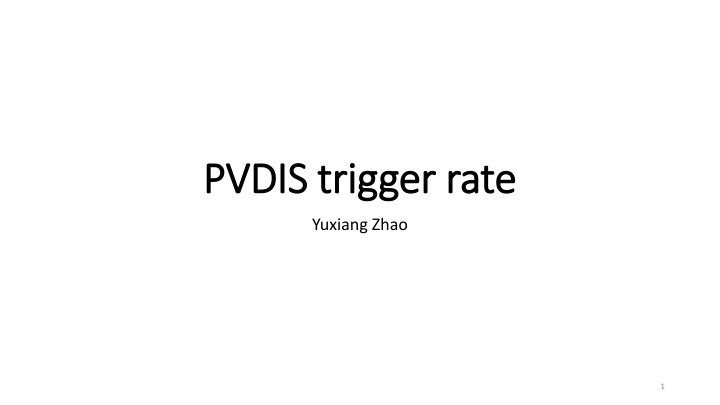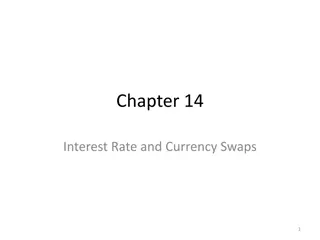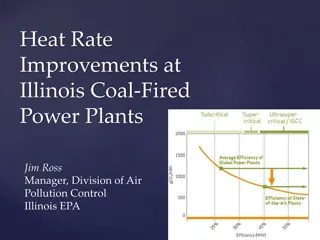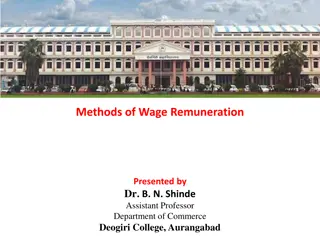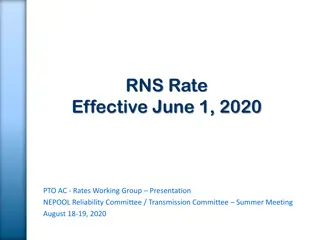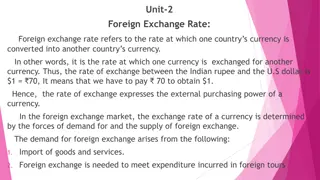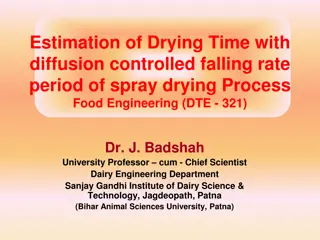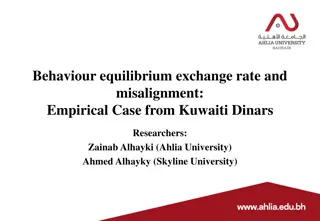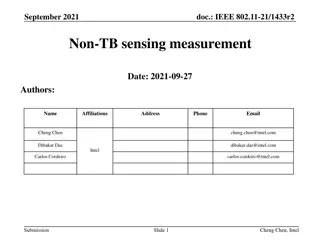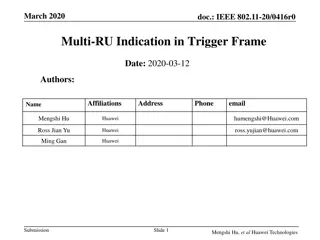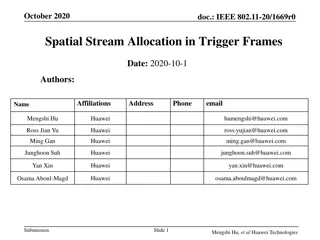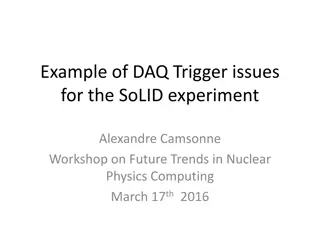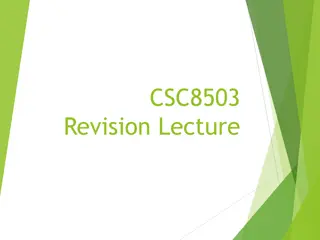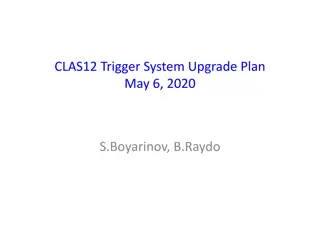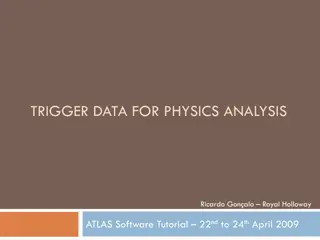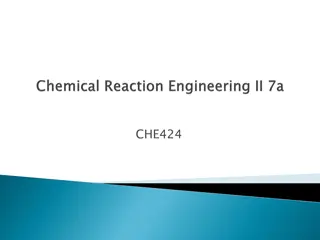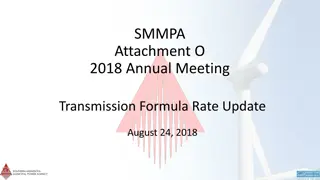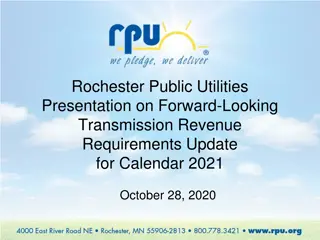PVDIS Trigger Rate Update and Analysis
This data analysis delves into the trigger rates for PVDIS and EC singles, utilizing Rakitha's curve and Hall D generator. It also discusses the rates based on different particle events and the estimation of coincidence rates. Explore the impact of particle correlations between pim on EC and pi0 on LGC in this comprehensive study.
Download Presentation

Please find below an Image/Link to download the presentation.
The content on the website is provided AS IS for your information and personal use only. It may not be sold, licensed, or shared on other websites without obtaining consent from the author.If you encounter any issues during the download, it is possible that the publisher has removed the file from their server.
You are allowed to download the files provided on this website for personal or commercial use, subject to the condition that they are used lawfully. All files are the property of their respective owners.
The content on the website is provided AS IS for your information and personal use only. It may not be sold, licensed, or shared on other websites without obtaining consent from the author.
E N D
Presentation Transcript
PVDIS trigger rate PVDIS trigger rate Yuxiang Zhao 1
Singles rate update on EC Singles rate update on EC singles Rate (MHz) Jin s curve, wiser generator, extrapolation below 1 GeV Rate (MHz) Rakitha s curve, Hall D generator, cut off at 1 GeV Electron 0.282 0.241 Pim (Hall D) 5.05 4.4 Pip (Hall D) 1.0 0.43 Pi0(Hall D) 0.031 0.015 Total 6.36=(212 KHz/sector) 5.09=(170 KHz/sector) The real calculation will use Rakitha s curve and Hall D generator the other numbers are just for reference 2
Singles rate update using Singles rate update using Hall D generator Singles rate on lgc Threshold: PMT=2, PE on each pmt=2 Hall D generator singles Rate (MHz) Electron 0.4465 Pim (Hall D) 0.823 Pip (Hall D) 0.436 Pi0(Hall D) 21.76 EM background only (beam on target with hadron process blocked) 0.6 (18 out of 1066 windows can produce a lgc trigger) Total 24.1 MHZ (803KHz/sector) Beam on target with all processes open: 42MHz Different by 17.9 MHz From difference of pi0 rate between G4 and Hall D generator 3
Number of Number of p.e p.e produced by EM on produced by EM on lgc lgc within 30ns within 30ns On whole LGC, not per sector EM is not an issue on lgc, only the pile up effects 4
Rate with Rate with EC&lgc Numbers with Rakitha s curve and Hall D generator: EC&lgc both fired for singles event both fired for singles event PID Only EC fired Rate with EC and lgc both fired for the same e or pion event Efficiency of LGC Electron 0.24 MHz 0.23 MHz 95.7% Pim 4.43 MHz 0.64 KHz 0.01% Pip 0.43 MHz 0 (limit: 0.04kHz) 0.01% Pi0 0.015 MHz 8.5 KHz 57% Both EC and LGC have backgrounds taken into account 5
Coincidence Rate estimation Coincidence Rate estimation --- ---Rakitha s Rakitha s curve and Hall D generator curve and Hall D generator PID Only EC fired Rate with EC and lgc both fired for the same e or pion event Efficiency of LGC Electron 0.24 MHz 0.23 MHz 95.7% Pim 4.43 MHz 0.64 KHz 0.01% Pip 0.43 MHz 0 (limit: 0.04kHz) 0.01% Pi0 0.015 MHz 8.5 KHz 55% electron with EC&LGC = 230 KHz = 7.7 KHz/sector pion with EC&LGC = (0.64 + 0.04 + 8.5) KHz = 9 KHz = 0.3 KHz/sector Random coincidence per sector = 170 KHz * 803 KHz * 30ns = 4.1 KHz/sector Total: (7.7+0.3+4.1) KHz = 12.1 KHz/sector 6
Concern of particle correlations Concern of particle correlations High singles rate: pim on EC, pi0 on LGC How large is the correlation between pim and pi0 ??? Hall D generator can have all possible pions in one event Looking at EC&LGC coincidence will give us hints on the correlations between pions 0.3% of all-pion events will fire EC and LGC at the same time Seems that correlation of pions on EC and LGC is small Will do more study on it 7
Summary of PVDIS trigger rate Summary of PVDIS trigger rate Rakitha s EC curve and Hall D generator Total: (7.7+0.3+4.1) KHz = 12.1 KHz/sector 8
Backups 9
Singles rate update on EC Singles rate update on EC singles Rate (MHz) Jin s curve, wiser generator Rate (MHz) Jin s curve, Hall D generator, extrapolation below 1 GeV Rate (MHz) Rakitha s curve, Hall D generator, cut off at 1 GeV Electron 0.282 0.282 0.241 Pim (Hall D) 5.05 3.1 4.4 Pip (Hall D) 1.0 0.455 0.43 Pi0(Hall D) 0.031 0.021 0.015 Total 6.36=(212 KHz/sector) 3.8 (=127kHz/sector) 5.09=(170 KHz/sector) The real calculation will use Rakitha s curve and Hall D generator the other numbers are just for reference 10
Rate with Rate with EC&lgc Numbers with Jin s curve and Hall D generator: EC&lgc both fired for singles event both fired for singles event PID Only EC fired Rate with EC and lgc both fired for the same e or pion event Efficiency of LGC Electron 0.282 MHz 0.27 MHz 95.7% Pim 3.065 MHz 3.8 KHz 0.12% Pip 0.455 MHz 0 (limit: 0.55kHz) 0.12% Pi0 0.021 MHz 8 KHz 38% Both EC and LGC have backgrounds taken into account Numbers with Rakitha s curve and Hall D generator: PID Only EC fired Rate with EC and lgc both fired for the same e or pion event Efficiency of LGC Electron 0.24 MHz 0.23 MHz 95.7% Pim 4.43 MHz 0.64 KHz 0.01% Pip 0.43 MHz 0 (limit: 0.04kHz) 0.01% Pi0 0.015 MHz 8.5 KHz 57% 11
Coincidence Rate estimation Coincidence Rate estimation --- ---Jin s Jin s EC curve and Hall D generator EC curve and Hall D generator PID Only EC fired Rate with EC and lgc both fired for the same e or pion event Efficiency of LGC Electron 0.282 MHz 0.27 MHz 95.7% Pim 3.065 MHz 3.8 KHz 0.12% Pip 0.455 MHz 0 (limit: 0.55kHz) 0.12% Pi0 0.021 MHz 8 KHz 38% electron with EC&LGC = 270 KHz = 9 KHz/sector pion with EC&LGC = (3.8 + 0.55 + 8) KHz = 12 KHz = 0.4 KHz/sector Random coincidence per sector = 127 KHz * 803 KHz * 30ns = 3.1 KHz/sector Total: (9+0.4+3.1) KHz = 12.5 KHz/sector 12
